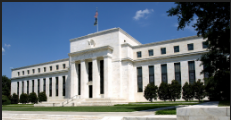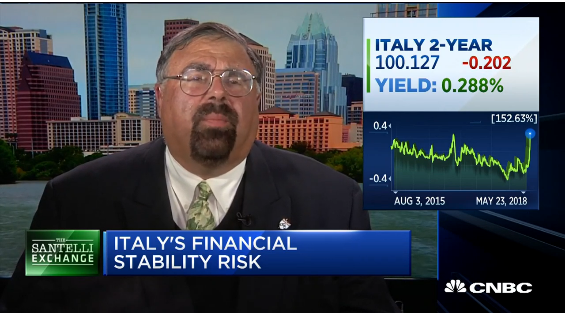Schianto in Italiano Means Crash
The CBOE volatility index (VIX) is settling down today, after a weekend dominated by the events in Charlottesville, that, while ugly, did not involve the threat of nuclear weaponry. So just where are the pins waiting to burst the dozens of market bubbles?
Across the pond, Mario Draghi has made Janet Yellen look like Paul Volcker, with quantitative easing for now and forever placing sticking a flimsy pole under the collapsing Eurotent. However, Lana Clements writes for the UK’s “Express,”
The so-called Quantitative Easing programme pumps billions of euros into the bloc each month through bond buying.
But the ECB balance sheet is now above four trillion euros and it is feared the bank could soon run out of assets to buy, meaning the programme must soon be scaled back.
The ECB gets its money to buy assets the same way the Fed, or any central bank, does--out of thin air. If government bonds are in short supply, central banks can always follow the Bank of Japan’s lead, buying ETFs in addition to corporate and sovereign bonds.
“The stronger euro is now another stumbling block, as it could climb higher if the ECB announce money-printing is reducing,” writes Clements, whose article is titled, “Eurozone NEW RISK: Exports TUMBLE as strong Euro drives Up prices in fresh hell for ECB.”
Draghi was due to cease his money creation at year end, but now all bets are off. Running out of assets to buy is the least of his problems. Mish Shedlock writes of jaw-dropping European loan delinquencies,
An EU report out this month shows nonperforming loans were a staggering €1.092 trillion as of the end of 2016.
The average non-performing rate in the EU is 5.1%, down from 5.7% in 2015. For comparison purposed, a World Bank Report has the US at 1.3%, Japan at 1.5%, and Canada at 0.6%
In contrast, Greece and Cyprus have NPL ratios of 46% and 45% respectively. Bulgaria, Croatia, Hungary, Ireland, Italy, Portugal, Slovenia, and Romania all have NPL ratios between 10% and 20%.
European banks need liquidity and they are selling what they can sell--sovereigns. Don Quijones writes,
As the FT reports, the selling by Italian banks is the most emphatic example yet of a broader trend: banks sold €46 billion of government paper in June across Europe, taking the total reduction since the start of this year to €257 billion.
“Maybe we are seeing an indication of Italian banks catching up with what their counterparts in Spain have known for a long time — that sovereign debt is not the place to be in a world of rising interest rates, said Jefferies’ senior European economist, Marchel Alexandrovich.
So if the banks are unloading sovereign debt, who is buying?
Quijones explains,
The answer, in the case of Italy, is the ECB and its Italian branch office, the Bank of Italy, where Italian bank deposits rose by €22 billion in June and €50 billion since the start of 2017. The ECB “overbought” Italian government debt in July with purchases of €9.6 billion — its highest monthly quota since quantitative easing began.
Italian banks and the ECB have been purchasing nearly all (88%) of Italy’s debt issuance since 2008. Italy has only the fourth largest economy in the EU, but the largest amount of debt.
If Italian banks keep selling their country’s debt, the ECB will have to continue buying, because no one else will. But the ECB can only buy up a maximum of 33% of a given nation’s debt, and while it’s not quite full of Italy, it has nearly 25 percent.
According to Alleston Capital, once the limit is reached, the only way for this game of sovereign debt snap will continue is if non-banks increase their purchase activity up to seven times that of the past nine years. Not likely.
So that pin that was previously mentioned-- look in Italy’s haystack: unresolved issues in the banking sector, €400 billion owed the ECB, rising public opposition in Italy to Eurozone membership, and the growing likelihood of political instability as elections approach in 2018. Brexit on steroids.
Quijones writes,
The ECB’s binge-buying of sovereign and corporate bonds has spawned a mass culture of financial dependence across Europe, while merely serving to paper over the cracks that began forming — or at least became visible — in some Eurozone economies during the sovereign debt crisis. In many places the cracks are even bigger than they were back then. This is the elephant in the ECB’s room, and by now it’s too big to ignore.
Arrivederci will be messy.







